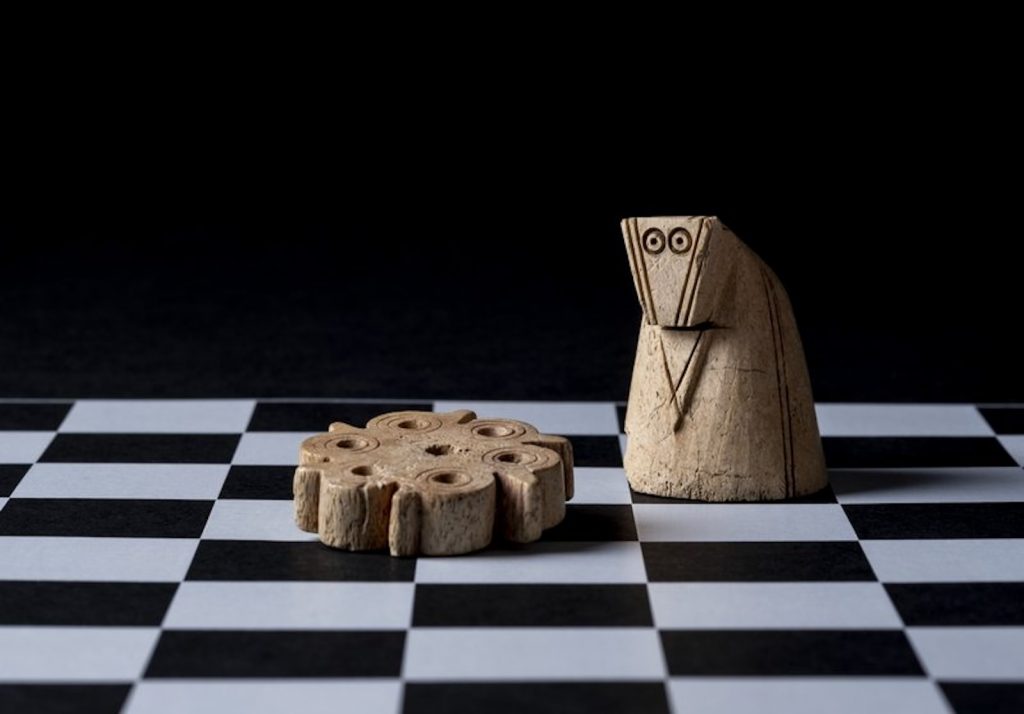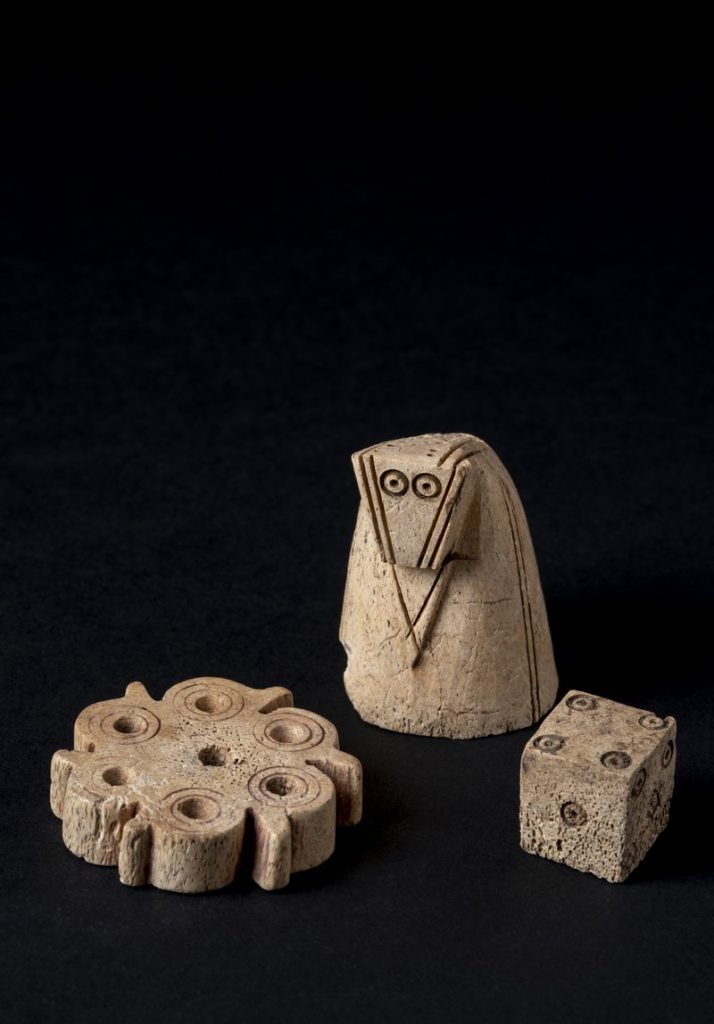Archaeology & History
Medieval Game Pieces Emerge From the Ruins of a Mysterious German Castle
Among them are a six-sided die and a chess piece whose surface is worn from use.

A small cache of medieval game pieces has been discovered in the ruins of a recently discovered castle in southern Germany. The finds provide a window into leisure time, possibly among actual knights, dating back nearly a millennium, approximately the time that chess arrived in Europe as an import from Asia.
The find includes a six-sided die, assorted game pieces including four in the shape of flowers, and a very well-preserved 1½-inch-high chess piece, all carved from antlers.
“In the Middle Ages, chess was one of the seven skills that a good knight should master,” said Jonathan Scheschkewitz, of the State Office for the Preservation of Monuments Baden-Württemberg. “It is therefore not surprising that known finds mostly come from castles.”
There is evidence that these are not just display objects, but pieces that were actually used. “Under the microscope,” explained Flavia Venditti of the University of Tübingen, “a typical sheen from holding and moving the pieces can be seen.”

Courtesy University of Tübingen/Victor Brigola.
An international team of experts from the University of Tübingen, the State Office for the Preservation of Monuments Baden-Württemberg and the German Archaeological Institute is now examining this evidence of early gaming culture.
“The discovery of an entire games collection [from] the 11th/12th century came as a complete surprise to us,” said Lukas Werther, of the German Archaeological Institute, “and the horse-shaped knight piece is a real highlight.”

Courtesy University of Tübingen/Victor Brigola.
The pieces came to light during excavations by the DFG Collaborative Research Centre 1070 Resource Cultures and the State Office for the Preservation of Monuments Baden-Württemberg in a previously unknown castle in the Reutlingen district of southern Germany’s Baden-Württemberg region.
“They were lying under the debris of a wall where they were lost or hidden in the Middle Ages,” said Michael Kienzle of the University of Tübingen. They are in such good condition, he added, precisely because they had been covered under those materials.
They will go on display this month in two exhibitions: “Excavated! Knights and Castles in the Echaz Valley” at the Schlössle Pfullingen (June 15–August 30) and “The Hidden Länd: We in the First Millennium” at the Archaologisches Landsmuseum Baden-Württemberg (September 13, 2024–January 26, 2025).
Can’t make it to those exhibitions? For those interested in taking a closer look, there are 3D views of the chess piece, the die, and the flower-shaped piece online.





